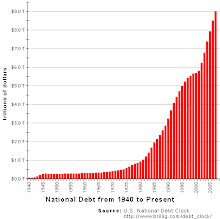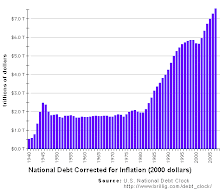Thursday, June 11, 2009
What causes recessions and depressions?
Recessions and depressions are caused by insufficient overall spending on newly produced goods and services. When there is insufficient aggregate demand (AD) for new products, stores sell fewer things, causing factories to produce less output and increasing unemployment. As workers lose their jobs, their incomes are reduced, leading to further decreases in overall spending and deepening the economic downturn.
The recession that began in December 2007 was caused by collapsing housing prices, the subprime mortgage crisis, and subsequent tightening of credit markets. In 2004 and 2005, the United States experienced unusually rapid increases in housing prices, sometimes referred to as a real estate bubble. Low interest rates and insufficiently regulated lending practices fueled these unsustainable price increases. Many people increased general purchases by borrowing against their homes (with unrealistically high values). Housing prices peaked in 2006 and the subsequent declines, sometimes called the bursting of the bubble, triggered home foreclosures, the subprime mortgage crisis and reductions in loans. Thus, real estate declines led to a decrease in the aggregate demand (AD) for newly produced goods and services.
See also "Recessions & Depressions: Questions & Answers."
The recession that began in December 2007 was caused by collapsing housing prices, the subprime mortgage crisis, and subsequent tightening of credit markets. In 2004 and 2005, the United States experienced unusually rapid increases in housing prices, sometimes referred to as a real estate bubble. Low interest rates and insufficiently regulated lending practices fueled these unsustainable price increases. Many people increased general purchases by borrowing against their homes (with unrealistically high values). Housing prices peaked in 2006 and the subsequent declines, sometimes called the bursting of the bubble, triggered home foreclosures, the subprime mortgage crisis and reductions in loans. Thus, real estate declines led to a decrease in the aggregate demand (AD) for newly produced goods and services.
See also "Recessions & Depressions: Questions & Answers."
Subscribe to:
Post Comments (Atom)






The economy will always have cycles.
ReplyDelete